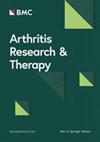Performance of the modified 2022 ACR/EULAR giant cell arteritis classification criteria without age restriction for discriminating from Takayasu arteritis
IF 4.9
2区 医学
Q1 Medicine
引用次数: 0
Abstract
To evaluate the ability to discriminate giant cell arteritis (GCA) from Takayasu arteritis (TAK) according to the modified 2022 American College of Rheumatology/European Alliance of Associations for Rheumatology (ACR/EULAR) GCA classification criteria. Patients enrolled in the Japanese nationwide retrospective registry were evaluated using the criteria with partial modification; wall thickening of descending thoracic-abdominal aorta were mainly diagnosed by contrast-enhanced computed tomography (CT) or magnetic resonance imaging instead of evaluating with positron emission tomography (PET)-CT. The discriminability of the criteria was evaluated using C-statistic (> 0.7: good ability). Newly diagnosed patients with GCA (n = 139) and TAK (n = 129) were assessed, and 23.3% of TAK were aged 50 years or older at onset. The sensitivity of the modified 2022 ACR/EULAR GCA classification criteria with a score ≥ 6 was 82.0%, 68.5%, and 32.1% in all GCA, GCA with large-vessel involvement, and GCA without cranial arteritis, respectively. The specificity of the modified criteria was 96.1% for the 129 TAK as controls. Five patients with late-onset TAK met the modified criteria, and four had cranial signs and symptoms, two had bilateral axillary artery involvement, and four had descending thoracic-abdominal aorta involvement. The discriminability of the criteria was good (C-statistic: 0.986, 95% confidence interval [CI]: 0.976–0.996) and remained good after excluding age (C-statistic: 0.927, 95% CI: 0.894–0.961). The discriminability of a set of large-vessel lesions (bilateral axillary artery and descending thoracic-abdominal aorta) and inflammatory markers was markedly decreased with poor C-statistic value (C-statistic: 0.598, 95% CI: 0.530–0.667). Discriminability was improved after adding polymyalgia rheumatica (PMR) (C-statistic: 0.757, 95% CI: 0.700–0.813) or age (C-statistic: 0.913, 95%CI: 0.874–0.951) to the set of large-vessel lesions. In GCA patients with a score ≤ 5, 52% had bilateral subclavian and/or axillary artery involvement. The modified 2022 ACR/EULAR GCA classification criteria well performed in classifying GCA and TAK without PET-CT in routine clinical practice. A set of items included in the modified GCA classification criteria had good discriminative ability for GCA and TAK, even when age was excluded. However, age restriction or PMR was required to distinguish GCA without cranial lesions from TAK.求助全文
约1分钟内获得全文
求助全文
来源期刊

Arthritis Research & Therapy
RHEUMATOLOGY-
CiteScore
8.60
自引率
2.00%
发文量
261
审稿时长
14 weeks
期刊介绍:
Established in 1999, Arthritis Research and Therapy is an international, open access, peer-reviewed journal, publishing original articles in the area of musculoskeletal research and therapy as well as, reviews, commentaries and reports. A major focus of the journal is on the immunologic processes leading to inflammation, damage and repair as they relate to autoimmune rheumatic and musculoskeletal conditions, and which inform the translation of this knowledge into advances in clinical care. Original basic, translational and clinical research is considered for publication along with results of early and late phase therapeutic trials, especially as they pertain to the underpinning science that informs clinical observations in interventional studies.
 求助内容:
求助内容: 应助结果提醒方式:
应助结果提醒方式:


